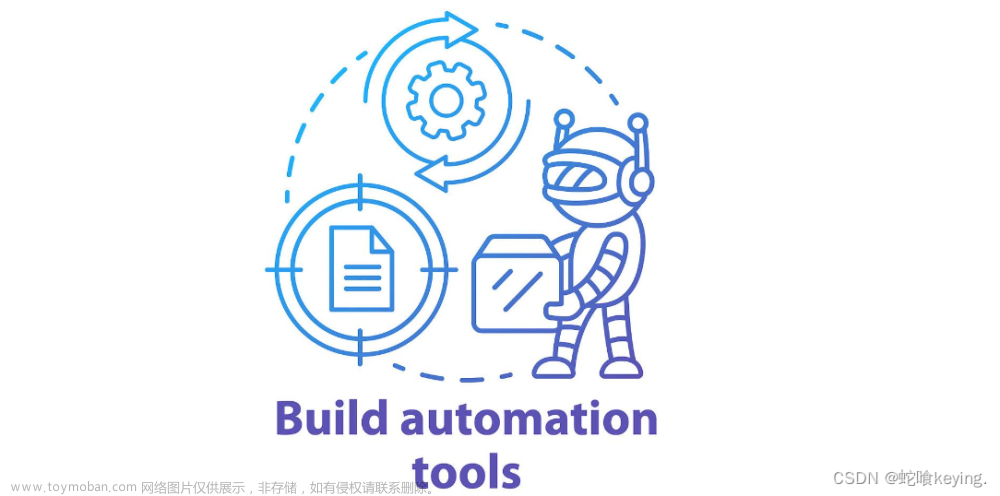写在前面
Gradle是一个基于Apache Ant和Apache Maven概念的项目自动化构建开源工具。
面向Java应用为主。当前其支持的语言C++、Java、Groovy、Kotlin、Scala和Swift,计划未来将支持更多的语言。
1、下载与安装(windows)
1、gradle官网下载:https://gradle.org/releases/

2、解压下载Gradle包,配置环境变量
新建系统环境 GRADLE_HOME,值为gradle解压后的目录
找到path变量,后面添加 %GRADLE_HOME%\bin
3、打开cmd,输入gradle -v ,测试是否配置完成
1.1、idea中配置gradle
在IDEA中创建Gradle项目时,会自动生成gradle文件夹,其中就包括 gradle-wrapper.properties ,IDEA默认使用gradle wrapper来创建项目,所以无需安装gradle也可以正常运行。
下面是配置gradle的仓库
2、基础知识(Gradle 6.9为例)
1、Projects 和 tasks
任何一个 Gradle 构建都是由一个或多个 projects 组成。一个projects 由多个project构成,每个 project 都由多个 tasks 组成。每个 task 都代表了构建执行过程中的一个原子性操作。
2、Gradle 脚本采用 Groovy 书写
脚本示例:build.gradle
task hello {
doLast {
println 'Hello world!'
}
}
在该文件目录下执行:gradle -q hello
以上代码可简写为
task hello {
println 'Hello world!'
}
<<在Gradle4.x中被弃用,在Gradle 5.0中被移除。
弃用以前写法:
task hello << {
println 'Hello world!'
}
2.1、Gradle 脚本语法
2.1.1、dependsOn
dependsOn 指定依赖关系
task hello {
println 'Hello world!'
}
task intro(dependsOn: hello) {
println "I'm Gradle"
}
延迟依赖:依赖在定义之前使用,该依赖会在后面执行
task taskX(dependsOn: 'taskY') {
println 'taskX'
}
task taskY {
println 'taskY'
}
运行结果
\> gradle -q taskX
taskY
taskX
2.1.2、创建动态任务

\> gradle -q task1
I'm task number 1
2.1.3、增加任务行为
为已存在的任务增加行为。
4.times { counter ->
task "task$counter" {
println "I'm task number $counter"
}
}
task0.dependsOn task2, task3
为任务增加多个行为
task hello {
println 'Hello Earth'
}
hello.doFirst {
println 'Hello Venus'
}
hello.doLast {
println 'Hello Mars'
}
hello {
println 'Hello Jupiter'
}
2.1.4、参数
$hello.name 可以调用任务hello的名字
task hello {
println 'Hello world!'
}
hello.doLast {
println "Greetings from the $hello.name task."
}
新增一个叫做 myProperty 的属性,用 ext.myProperty 的方式给他一个初始值。
task myTask {
ext.myProperty = "myValue"
}
task printTaskProperties {
println myTask.myProperty
}
2.1.5、Ant 任务
对 Ant 任务进行了的整合
task loadfile {
def files = file('../antLoadfileResources').listFiles().sort()
files.each { File file ->
if (file.isFile()) {
ant.loadfile(srcFile: file, property: file.name)
println " *** $file.name ***"
println "${ant.properties[file.name]}"
}
}
}
2.1.6、方法
写一个方法fileList()
task checksum {
fileList('../antLoadfileResources').each {File file ->
ant.checksum(file: file, property: "cs_$file.name")
println "$file.name Checksum: ${ant.properties["cs_$file.name"]}"
}
}
task loadfile {
fileList('../antLoadfileResources').each {File file ->
ant.loadfile(srcFile: file, property: file.name)
println "I'm fond of $file.name"
}
}
File[] fileList(String dir) {
file(dir).listFiles({file -> file.isFile() } as FileFilter).sort()
}
2.1.7、默认任务
定义默认任务
defaultTasks 'clean', 'run'
task clean {
println '默认任务1'
}
task run {
println '默认任务2'
}
task other {
println "这个不是默认任务"
}
执行
\> gradle -q
默认任务1
默认任务2
2.1.6、依赖任务的不同输出
依赖任务的不同输出
task distribution << {
println "We build the zip with version=$version"
}
task release(dependsOn: 'distribution') << {
println 'We release now'
}
gradle.taskGraph.whenReady {taskGraph ->
if (taskGraph.hasTask(release)) {
version = '1.0'
} else {
version = '1.0-SNAPSHOT'
}
}
输出
\> gradle -q distribution
We build the zip with version=1.0-SNAPSHOT
\> gradle -q release
We build the zip with version=1.0
We release now
3、java项目中使用
3.1、在已有项目中构建gradle
在项目目录下:gradle init

构建完成会生成相关文件

3.2、在新建项目时构建gradle(idea)
在idea中新建Gradle项目

新建一个项目gradleDemo1,如下是项目目录结构

3.3、gradle项目目录结构
├─.gradle
├─.idea
├─gradle // 为包装文件生成的文件夹
│ └─wrapper
│ ├── gradle-wrapper.jar
│ └── gradle-wrapper.properties
├── gradlew // Gradle 包装器启动脚本
├── gradlew.bat // Gradle 包装器启动脚本
├── settings.gradle // 用于定义构建名称和子项目的设置文件
├── build.gradle // gradle 配置内容
└─src // 项目代码
├─main
│ ├─java
│ └─resources
└─test
├─java
└─resources
3.4、build.gradle

3.4.1、plugins
plugins 中配置的是gradle脚本使用到的插件。如果使用的是核心插件如 ‘java’无需指定版本,使用的是“社区插件”则必须指定version。
plugins {
id 'java'
id 'application'
id 'org.springframework.boot' version '2.3.4.RELEASE'
}
3.4.2、repositories
repositories 配置各种仓库示例
repositories {
mavenLocal()
maven { url 'http://192.168.1.1:80/content/groups/public' }
maven { url 'http://192.168.1.1:80/content/groups/public-snapshots' }
mavenCentral()
}
3.4.3、dependencies
dependencies 项目依赖项示例
dependencies {
//单个依赖
implementation group: 'com.alibaba', name: 'fastjson', version: '1.2.73'
//单个依赖简写
implementation 'com.alibaba:fastjson:1.2.73'
//多个依赖
implementation 'com.alibaba:fastjson:1.2.73', 'log4j:log4j:1.2.17'
//闭包依赖,为了添加额外配置
implementation("org.mybatis:mybatis:3.5.6"){
exclude group :"org.springframework",module:"spring"
exclude group :"org.javassist",module:"javassist"
exclude group :"org.jboss.netty",module:"netty"
}
//双引号方式使用变量,在ext中声明或 def 关键字声明变量 lombok_version=具体版本
annotationProcessor "org.projectlombok:lombok:$lombok_version"
compileOnly "org.projectlombok:lombok:${lombok_version}"
}
3.4.4、configurations
configurations 配置全局排除依赖示例
configurations {
all{
exclude group :"org.springframework.boot",module:"spring-boot-starter-logging"
}
//编译期排除
//compile.exclude module: 'spring-boot-starter-logging'
//在构建过程中排除
//all*.exclude group: 'org.springframework.boot', module: 'spring-boot-starter-logging'
}
//简写
configurations.all*.exclude module: "spring-boot-starter-logging"
3.4.5、buildscript
buildscript 中声明的是gradle脚本自身需要使用的资源。可以声明包括变量、任务、依赖项、第三方插件、maven仓库地址等。gradle在执行脚本时会优先执行该代码块中的内容,而后执行其它脚本。
buildscript {
//变量
ext {
spring_boot_version = '2.3.4.RELEASE'
spring_dependency_management_version = '1.0.10.RELEASE'
}
//maven仓库
repositories {
mavenLocal()
maven { url 'http://192.168.1.1:80/content/groups/public' }
maven { url 'http://192.168.1.1:80/content/groups/public-snapshots' }
mavenCentral()
}
//依赖项
dependencies {
classpath "io.spring.gradle:dependency-management-plugin:${spring_dependency_management_version}"
classpath "org.springframework.boot:spring-boot-gradle-plugin:${spring_boot_version}"
}
//任务
task myTask(){
//处理任务
}
3.4.6、依赖版本管理
在gradle官方文档中明确指出,如果想使用依赖关系管理,那就需要使用的gradle版本大于4.4。
方式一,使用插件:
plugins {
id 'java'
//指定版本
id 'org.springframework.boot' version "2.3.4.RELEASE"
//配置依赖管理插件,自定义托管版本
id 'io.spring.dependency-management' version "1.0.10.RELEASE"
}
dependencies {
implementation 'org.springframework.boot:spring-boot-starter-web'
implementation 'org.springframework.boot:spring-boot-starter-data-jpa'
testImplementation "org.springframework.boot:spring-boot-starter-test"
}
方式二,使用插件,自动追加版本
plugins {
id 'java'
//指定版本
id 'org.springframework.boot' version "2.3.4.RELEASE"
}
//应用依赖管理插件,自动给插件追加版本号
apply plugin: "io.spring.dependency-management"
dependencies {
implementation 'org.springframework.boot:spring-boot-starter-web'
implementation 'org.springframework.boot:spring-boot-starter-data-jpa'
testImplementation "org.springframework.boot:spring-boot-starter-test"
}
使用 BOM 方式管理 spring-cloud依赖版本
plugins {
id 'java'
id 'org.springframework.boot' version "2.3.4.RELEASE"
id 'io.spring.dependency-management' version "1.0.10.RELEASE"
}
dependencies {
implementation 'org.springframework.boot:spring-boot-starter-web'
implementation "org.springframework.cloud:spring-cloud-starter-config"
implementation "org.springframework.cloud:spring-cloud-starter-openfeign"
}
dependencyManagement {
imports {
mavenBom "org.springframework.cloud:spring-cloud-dependencies:${spring_cloud_version}"
}
}
3.4.7、乱码与测试编译
编译乱码处理
//在 build.gradle 增加以下配置
tasks.withType(JavaCompile) {
options.encoding = 'UTF-8'
}
跳过测试编译
//在 build.gradle 增加以下配置
gradle.taskGraph.whenReady {
tasks.each { task ->
if (task.name.contains("test")) {
task.enabled = false
}
}
}
3.4.8、发布私服配置
// 1.私服账号密码
buildscript {
ext {
nexusUsername = 'admin'
nexusPassword = '12345'
}
}
// 2.配置分组,版本号
group 'com.alone.demo'
version '0.0.1-SNAPSHOT'
// 3.配置maven插件
plugins {
id 'maven'
}
//发布私服,包名为文件 settings.gradle 中 rootProject.name 配置的名称,版本为上文配置的 verison 版本号
uploadArchives {
repositories {
mavenDeployer {
//这里配置自己的私服地址
repository(url: "http://192.168.1.1:80/content/repositories/releases/") {
authentication(userName: nexusUsername, password: nexusPassword)
}
//这里配置自己的私服地址
snapshotRepository(url: "http://192.168.1.1:80/content/repositories/snapshots/") {
authentication(userName: nexusUsername, password: nexusPassword)
}
}
}
}
执行发布
gradle uploadArchives
发布本地
// 1.配置分组,版本号
group 'com.alone.demo'
version '0.0.1-SNAPSHOT'
// 3.配置maven插件
plugins {
id 'maven-publish'
}
//发布本地,包名为文件 settings.gradle 中 rootProject.name 配置的名称,版本为上文配置的 verison 版本号
publishing {
publications {
maven(MavenPublication) {
from(components.java)
}
}
}
3.4.9、依赖冲突
1.通过配置全局排除冲突包(全局封杀)
//方式一
configurations {
all{
exclude group :"org.springframework.boot",module:"spring-boot-starter-logging"
}
}
//方式二 简写
configurations.all*.exclude module: "spring-boot-starter-logging"
2.诊断出具体依赖项冲突可以排除具体包
dependencies {
implementation("org.mybatis:mybatis:3.5.6"){
exclude group :"org.springframework",module:"spring"
exclude group :"org.jboss.netty",module:"netty"
}
}
3.强制指定版本策略,即在发生冲突时使用指定的版本
//冲突失败策略设置
configurations.all {
resolutionStrategy { failOnVersionConflict() }
}
//强制指定版本策略设置
dependencies {
//方式一 闭包
implementation ("io.netty:netty-all:4.0.44.Final"){
force true
}
//方式二 简写
implementation group: 'io.netty', name: 'netty-all', version: '4.0.44.Final', force: true
}
4.在平时使用动态依赖来减小发生版本冲突的几率
dependencies {
//方式一:指定某个版本以上,减小发生版本冲突的几率。如以下依赖选择 3 以上任意一个版本
implementation 'cn.afterturn:easypoi-base:3.+'
// 方式二:选择最新的版本
implementation 'cn.afterturn:easypoi-base:latest.integration'
}
3.5、相关指令
gradle clean // 清理
gradle clean build // 构建打包
gradle dependencies // 查看依赖
gradle dependencies -configuration compile // 查看编译时依赖
gradle clean build -x test // 编译时跳过测试,使用 -x,-x 参数用来排除不需要执行的任务
idea可以在界面上操作文章来源:https://www.toymoban.com/news/detail-421579.html
 文章来源地址https://www.toymoban.com/news/detail-421579.html
文章来源地址https://www.toymoban.com/news/detail-421579.html
到了这里,关于Gradle 自动化构建开源工具的文章就介绍完了。如果您还想了解更多内容,请在右上角搜索TOY模板网以前的文章或继续浏览下面的相关文章,希望大家以后多多支持TOY模板网!




![[Linux 基础] make、Makefile自动化构建工具](https://imgs.yssmx.com/Uploads/2024/02/736345-1.png)





![[Linux 基础] make、Makefile自动化构建代码工具](https://imgs.yssmx.com/Uploads/2024/02/714116-1.png)



